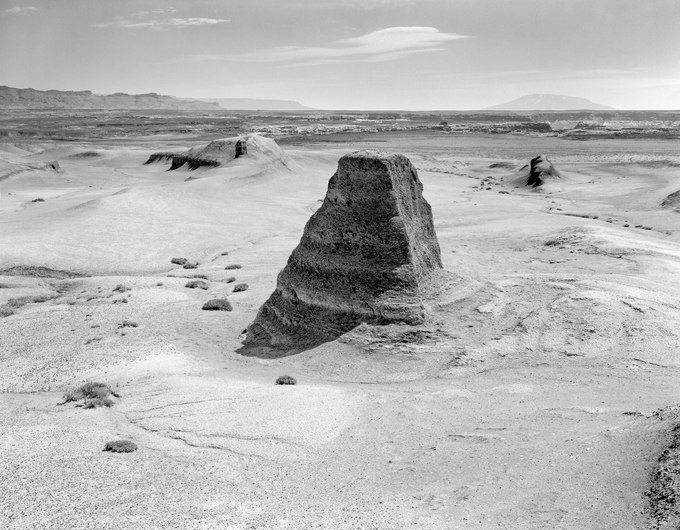Ninety million years ago, a rising sea flooded low-lying parts of western North America, dividing the continent with a seaway connecting the Arctic Ocean and the Gulf of Mexico. A thick seam of blue-gray fossil-rich silt and mud accumulated in a part of this shallow ocean that once covered the area that is now the Utah/Arizona border. Its weight pressed clay into stone, uplifting a mile above the ground and creating a plateau.
This desert of shale flats, knolls, and ravines, an area almost entirely devoid of life, is locally known as “The Moon.” Ironically, its eroding earth exposes abundant plant and animal remnants from an ancient sea once vibrant with life. Rarely visited, it lies between Lake Powell to the south and the Grand Staircase-Escalante National Monument to the north. It reminds me of a movie set featuring pioneers searching for water and shade. It’s easy to envision Charlton Heston playing John the Baptist here as he did in the 1965 film “The Greatest Story Ever Told.”
Camping on “The Moon,” I awoke to dawn’s radiant firmament illuminating rugged canyons, buttes, and mountains. The absence of life impressed upon me my tenuous sense of existence, where nothing grows (or dies). I explore its splendor and oddity, photographing a pyramidal hillock flanked on the horizon by Navajo Mountain on the right and the Vermillion Cliffs on the left, between which drifted a lone, ghostly alto-cumulus cloud as it dissolved in the dry heat.
Location research and commentary by James Baker.

